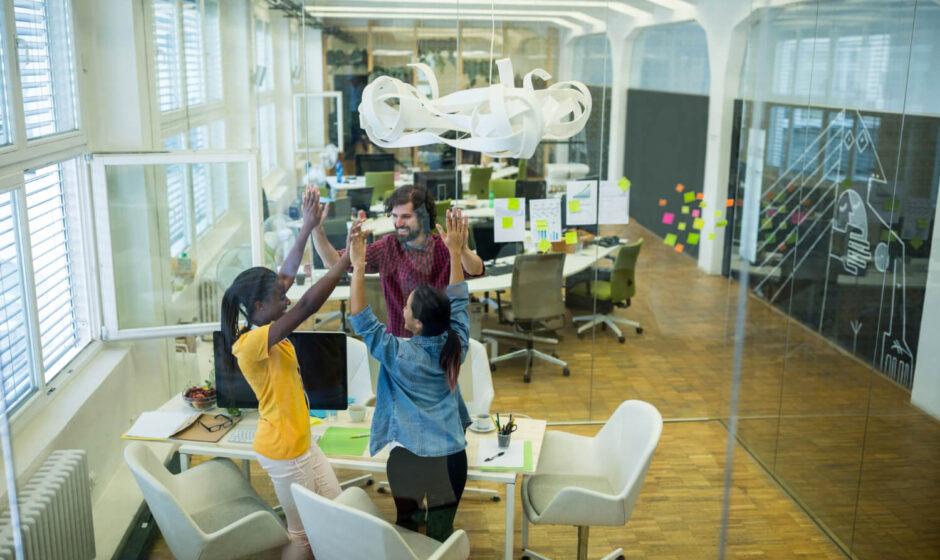The places we spend a large amount of time have a big influence on our productivity and well-being in the fast-paced world of modern work. Beyond simple aesthetics, workplace beautification refers to the deliberate design of spaces that support worker productivity and well-being in addition to being aesthetically pleasing. This post delves into the topic of smart office design and decor that promotes a peaceful and productive professional climate, covering the various facets of workplace beautification.
- Workplace Aesthetics’ Power:
Introduction
Outlining the context for comprehending the significant influence that workplace aesthetics have on worker pleasure and productivity.
Beyond Cubicles
Examine the transition from conventional workplaces with a focus on cubicles to open, visually attractive, and collaborative workspaces.
Psychological Impact
Talk about how aesthetics in the workplace affect people’s motivation, mood, and level of job satisfaction.
Improving Company Culture
Emphasize how careful office planning helps to form and improve the culture of the company, creating a welcoming and upbeat work atmosphere.
- Harmonizing Feature and Style: The Development of the Modern Office
Introduction
How office interiors have changed over time, moving from being strictly functional to being aesthetically pleasing.
Flexible Workspaces
Talk about the idea of flexible workspaces, which may accommodate a range of work styles and encourage cooperation, concentration, and adaptation.
Ergonomic Design
Examine how ergonomic workplace furniture and design features improve workers’ comfort, well-being, and general health.
Technology Integration
Emphasize how technology is incorporated into office design to provide a smooth, aesthetically pleasing interface that boosts output.
- Well-Designed Office Spaces: Promoting Focus and Collaboration:
Introduction
The thoughtful planning of workplace layouts to strike a balance between areas for concentrated work and communal spaces.
Open Office Concepts
Talk about the advantages and difficulties of open office concepts, stressing the necessity for careful planning to reduce distractions and noise.
Collaborative Hubs
Take a look at setting up collaborative areas or hubs in offices to promote cooperation, creativity, and chance meetings.
Quiet Zones for Concentration
Stress the value of establishing personal workstations or quiet areas for activities requiring focus and little distractions.
- Aesthetic Office Decor Components: From Art to Greenery
Introduction
How ornamental components can improve a workspace’s visual appeal and foster a happy environment.
Office Art and Murals
Talk about how to incorporate visual displays, art, and murals that showcase the company’s inventiveness, culture, and ideals.
Biophilic Design
Examine the advantages of biophilic design, such as the use of plants and other natural components, in establishing aesthetically pleasing and health-promoting workspaces.
Personalized Workspaces
Emphasize how distinctive décor makes each office beautiful and gives employees a chance to express their own preferences and inclinations.
- Workplace Design and Color Psychology:
Introduction
The importance of color selections in affecting workers’ attitudes, vitality, and general well-being at work.
Calming Colors for Focus
Talk about how to employ soothing hues, like green and blue, in situations where concentration and focus are crucial.
Energizing Accents
Investigate how to add vibrant accent colors, like orange and yellow, to areas meant for invention, teamwork, and creativity.
Balancing Naturals
Emphasize the significance of striking a balance between bold hues and muted tones in order to provide a unified and aesthetically pleasing look.
- Designing Lighting to Make Your Workplace Brighter:
Introduction
The function and aesthetic appeal of workplaces are enhanced by the design of lighting.
Natural Light Benefits
Discuss the advantages of natural light in offices, such as enhanced energy and mood as well as the support of circadian rhythms.
Task Lighting to Ensure Usability
Examine how task lighting might improve functionality by lowering eye strain and offering sufficient illumination for particular job tasks.
Customized Lighting Solutions
Draw attention to the growing trend of lighting solutions that let staff members change the amount of light in the workspace according to their requirements and tastes.
- Workplace Wellness Areas: Promoting Employee Health
Introduction
Including wellness areas in the workplace to promote the health and happiness of workers.
Fitness Areas and Breakout Zones
Talk about how adding fitness areas, breakout zones, and locations for rest and renewal may make workplaces more aesthetically pleasing.
Quiet Room and Meditation Spaces
• Examine the possibility of setting up quiet rooms and meditation areas to give staff members a dedicated area for stress alleviation and mental wellness.
• Promoting a Holistic Approach to Employee Well-Being Stress the ways in which wellness centers support a more robust and efficient workforce by promoting physical and mental well-being.
- Workplace Design Employee Involvement: Promoting Ownership and Satisfaction
Introduction
The advantages of giving workers a say in how their workspace is designed and decorated, as this creates a sense of fulfillment and ownership.
Design Committees and Feedback Sessions
Talk about setting up these forums where staff members can share their thoughts and preferences about how to design their offices.
Customizable Workstations
Examine the idea of workstations that are able to be customized, giving staff members the freedom to set up and customize their workspaces to suit their tastes.
Showcasing staff Achievements
Promote a culture of incentive and acknowledgement by showcasing staff accomplishments, which will enhance the aesthetic appeal of office environments.
- Assessing Workplace Beautification: Success Metrics:
Introduction
Measures and signs to evaluate the effectiveness of workplace beautification initiatives.
Employee Satisfaction Surveys
Talk about using these surveys to get input on how comfortable, satisfied, and well-rounded the workplace is in terms of appearance.
Productivity Metrics
Examine the relationship between thoughtfully planned workspaces and productivity metrics, taking into account elements like teamwork, creativity, and task completion.
Employee Retention and Recruitment
Emphasize the significance of workplace aesthetics in relation to employee retention and recruiting. A visually appealing workplace plays a crucial role in drawing and keeping top talent.
Conclusion
Changing the Face of Beauty at Work:
• Review the essential components of office design, such as customizable decor, wellness areas, and flexible layouts.
• Stress the positive effects of thoughtful workplace design on worker satisfaction, well-being, and productivity.
• In closing, extend an invitation to businesses to adopt the practice of workplace beautification, establishing settings that foster a culture of innovation, teamwork, and employee well-being in addition to increasing productivity.



